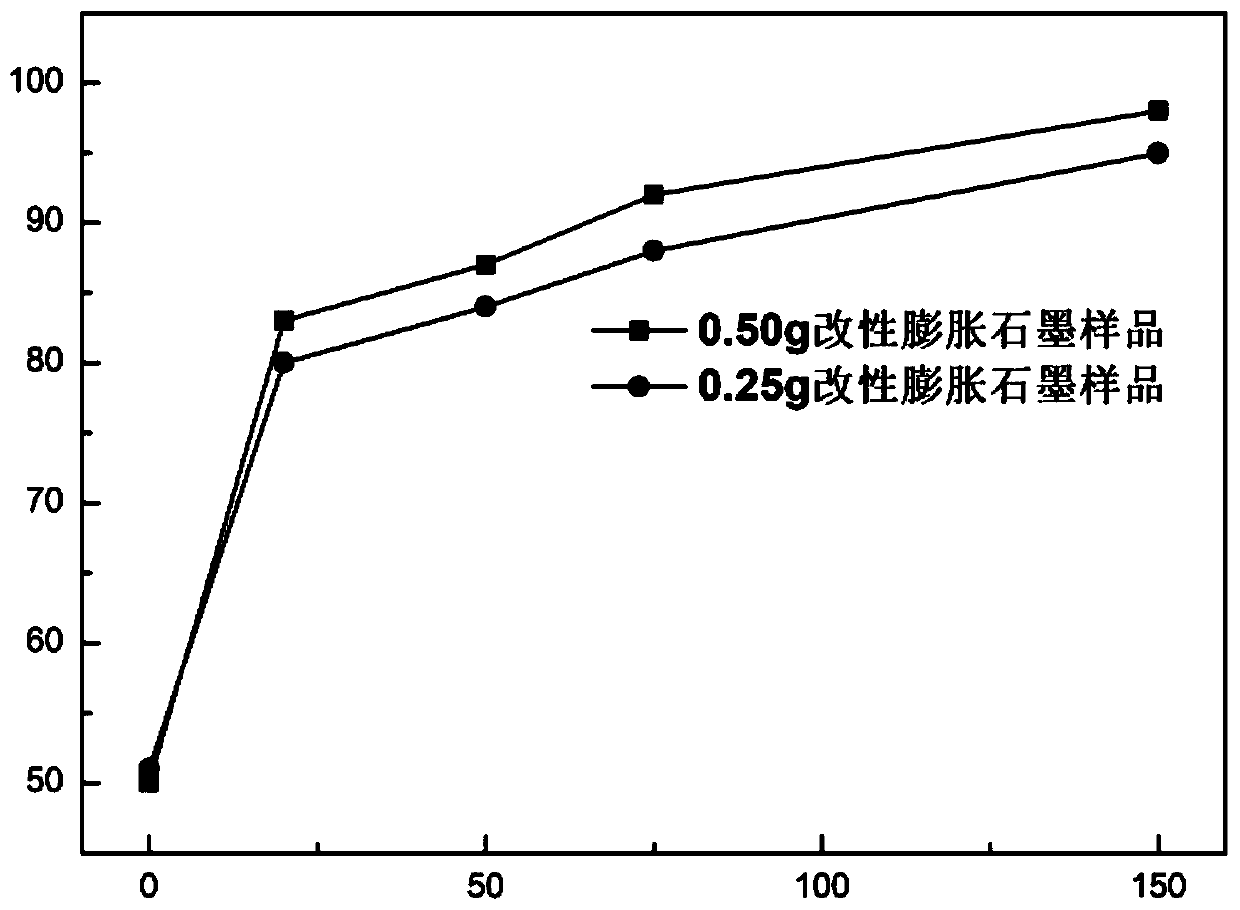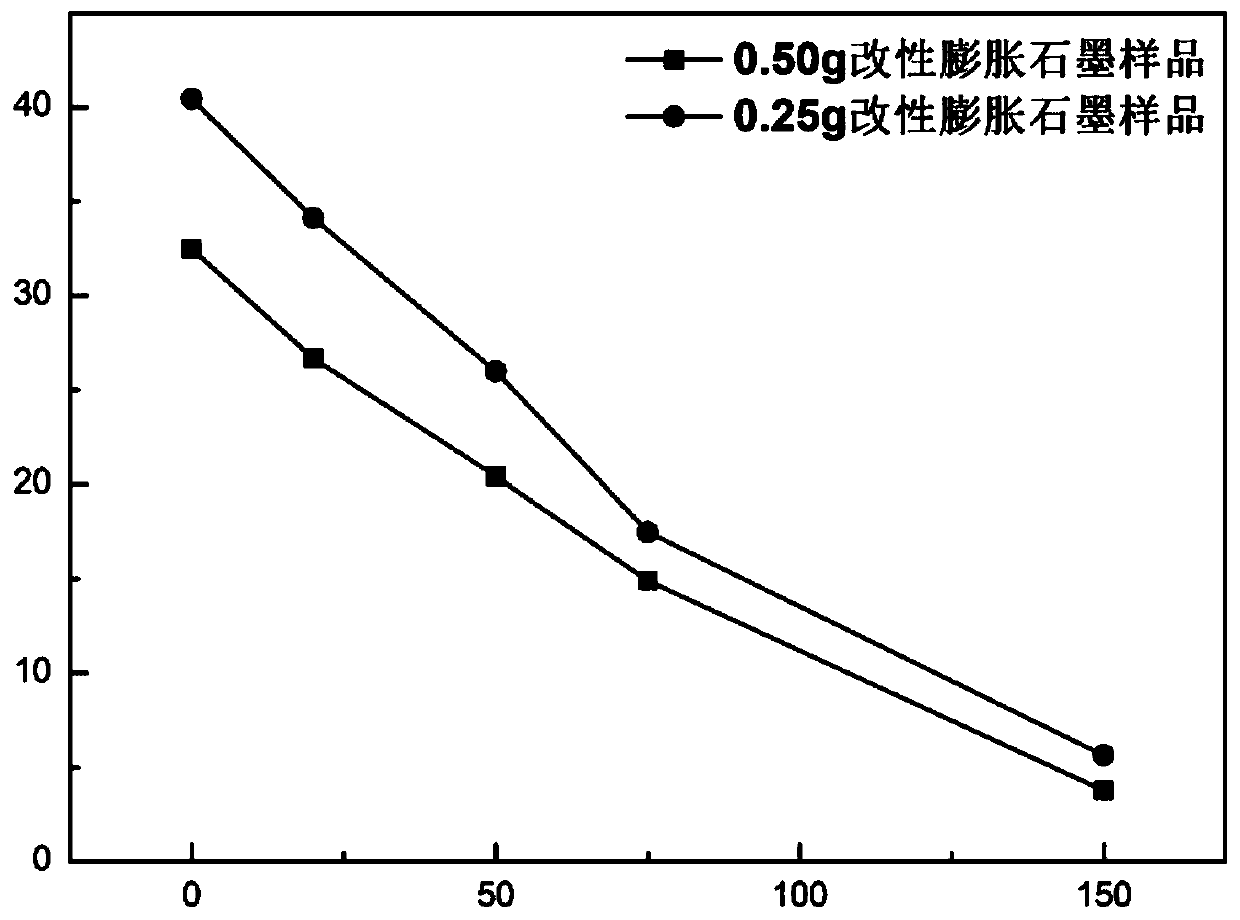Preparation method of expanded graphite-epoxy resin-polyurethane resin pressure-resistant composite material
A technology of polyurethane resin and expanded graphite, which is applied in the field of preparation of expanded graphite-epoxy resin-polyurethane resin pressure-resistant composite materials, which can solve the problems of poor strength, elasticity and toughness, and achieve excellent mechanical properties, enhanced wettability, and enhanced sealing performance effect
- Summary
- Abstract
- Description
- Claims
- Application Information
AI Technical Summary
Problems solved by technology
Method used
Image
Examples
specific Embodiment approach 1
[0037] Specific embodiment 1: The method for preparing the expanded graphite-epoxy-polyurethane resin pressure-resistant composite material described in this embodiment includes the following specific operations:
[0038] Step 1: Prepare expanded graphite and perform surface modification treatment on the prepared expanded graphite;
[0039] Step 1: Take 80-120ml of glacial acetic acid and add 400-600ml of perchloric acid to prepare glacial acetic acid-perchloric acid mixed solution I;
[0040] Step 1: Take 8-10g of 100-mesh flake graphite into a three-necked bottle, add 20-40ml of glacial acetic acid-perchloric acid mixed solution I, stir in an ice water bath for 10-30 minutes and mix evenly to obtain glacial acetic acid-perchloric acid mixed solution II;
[0041] Step 1: Add 1-5g of potassium permanganate to glacial acetic acid-perchloric acid mixed solution II in N times in equal amounts. After all potassium permanganate is added to glacial acetic acid-perchloric acid mixed solution ...
specific Embodiment approach 2
[0056] Specific implementation manner 2: In step one and three of this embodiment, 1-5g potassium permanganate is added to glacial acetic acid-perchloric acid mixed solution II in equal amounts in N times, and the value of N is in the range of 8-12 Times. Other undisclosed technologies and steps are the same as the first embodiment.
[0057] This setting is mainly because adding potassium permanganate all at once will cause the system temperature to rise suddenly and cause an explosion, so it is added several times. Adding a small amount of potassium permanganate each time will slightly increase the temperature of the reaction system. After the temperature of the system decreases, add the next potassium permanganate. Generally, it is divided into about 10 times with an interval of 1-2 minutes. It will be strictly quantified, but generally for the safety of operation and the balance of reaction efficiency, the amount of addition is basically the same each time.
specific Embodiment approach 3
[0058] Specific embodiment 3: The watch glass I in the step 14 in this embodiment is a glass watch glass. Other undisclosed technologies and steps are the same as the first embodiment.
[0059] In this setting, use glass watch glasses and try not to use metal containers, because perchloric acid during the reaction may cause metal corrosion to contaminate the sample, which will eventually affect the material parameters and performance after the experiment.
PUM
| Property | Measurement | Unit |
|---|---|---|
| tensile strength | aaaaa | aaaaa |
| compressive strength | aaaaa | aaaaa |
| tensile strength | aaaaa | aaaaa |
Abstract
Description
Claims
Application Information
 Login to View More
Login to View More - R&D Engineer
- R&D Manager
- IP Professional
- Industry Leading Data Capabilities
- Powerful AI technology
- Patent DNA Extraction
Browse by: Latest US Patents, China's latest patents, Technical Efficacy Thesaurus, Application Domain, Technology Topic, Popular Technical Reports.
© 2024 PatSnap. All rights reserved.Legal|Privacy policy|Modern Slavery Act Transparency Statement|Sitemap|About US| Contact US: help@patsnap.com










